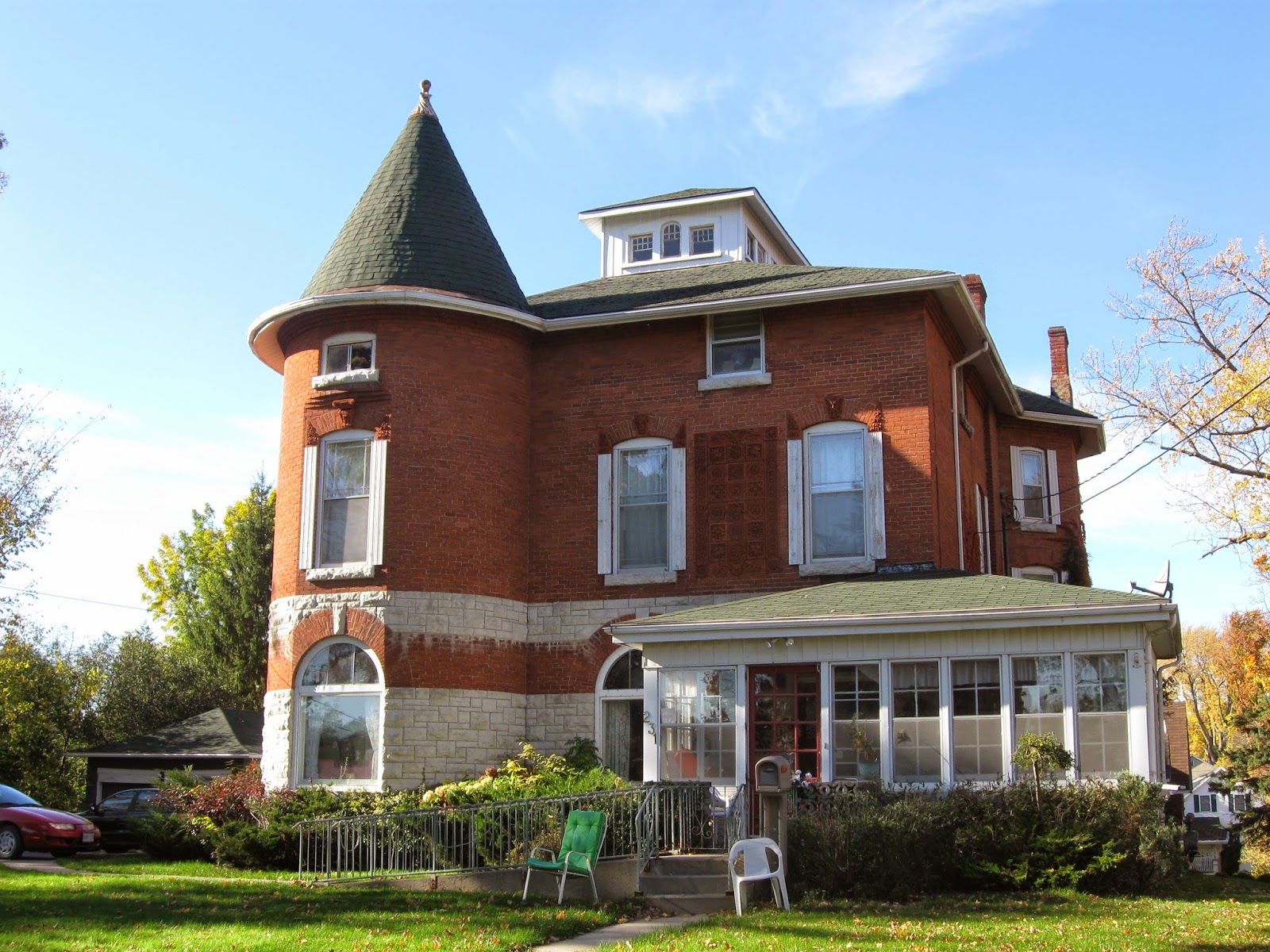 |
| Indian Head Sask. - no relation |

Now I haven't seen this place in person (yet) so I'll include the entirely trustworthy link which features a walking tour narration of the house and the builder's use of this unusual material.
Or go check out the unprepossessing neighbourhood via Streetview.
Here's another great article in BlogTO. This place has generated a lot of buzz, and deservedly so.

For terra cotta, to which I have often been attracted, mostly because of the way it adds medieval gloom to some of Toronto's wonderful red brick Romanesque Revival houses, is a material well worth considering. It has a great history in 1880's and 90's Ontario, with a number of manufacturers gaining prominence.

One important producer was right in my back yard, the Rathbun works (for didn't the family run all the industry in the place?) Deseronto! Short road-trip! I've just had a look at the old opera house on Main Street via Google Streetview, and guess what! Terra cotta bits.
This is hysterical - the interesting terra cotta grotesque face keystones have been blurred out by Streetview - that could be considered malicious compliance (always loved that phrase) regarding privacy concerns, were it not an entirely automatic thing. But I digress. (In my real writing job, I have to be a bit more disciplined about these side-trips, but this blog is a bit like a chat among old house nuts, over three cups of coffee.)
Turns out the Jerome Street house (still standing although the builder's first terra cotta house has been lost to condos) with its covering of decorative reliefs was the work of builder John Turner Sr. who was left with piles of decorative terra cotta after it fell sharply out of favour around 1895. So he put together this curious assemblage of large and small cast terra cotta elements, and the more you look the more you see,

By the grace of the google, I have been able to track down a couple of great resources on architectural terra cotta, learn some things I'd never have guessed about the material, and create a terra cotta photo tour wishlist to whittle away at.

The first great resource is an article by Barbara McMullen published in Heritage Canada's magazine in 2008 (follow the link so you can see the wonderful colour photographs. Oddly, the French and English editions contain different photos, providing a good tour).

I found out that there were a variety of colours available - not just flower pot red but white, cream or pink depending on the clay used. McMullen explains that terra cotta is easily mistaken for carved sandstone (I feel so much better), but that its crisp details as well as the seams where small units are joined together, give it away.
Terra cotta was made into a variety of design elements - panels, bandcourses, capitals, keystones, wreaths - in painstaking steps. First, clay models were created from architects' drawings, then plaster of Paris moulds were made from the models. Clay was pressed by hand into the moulds, dried, turned out, covered with slip and then fired for days. And we wonder where all the manufacturing jobs have gone.
Following on the heels of the collapsed unglazed terra market, glazed terra cotta (almost always white, cream or grey) appeared on commercial architecture from about 1900 to the 1930's. This time, terra cotta easily passes as stone; it was imported from England or the U.S.
 |
| 299 Queen West, Toronto |
Winnipeg's Exchange District (bucket list!) contains the nation's best collection of glazed terra cotta buildings, according to Barbara McMullen. Closer to home, the facade of the 1914 neo-Gothic former CHUM-City TV building (in an earlier incarnation, the 1919 headquarters of the Methodist Church!) is white glazed terra cotta. And there's a bank in Kingston that is similarly clad.
Another good resource - the Toronto Architectural Conservancy has a super publication for sale, Terrra Cotta: Artful Deceivers by Keefer, McHugh et al (1990) for a mere $15. It's on order.

Here is a terra cotta example from Napanee - doubtless supplied by the esteemed Rathbun Company. I will be looking more closely on my next ramble through town.
And incidentally, should you resort to googling your own sources, the Terra Cotta community hall is definitely a non-starter. Have a look.




No comments:
Post a Comment